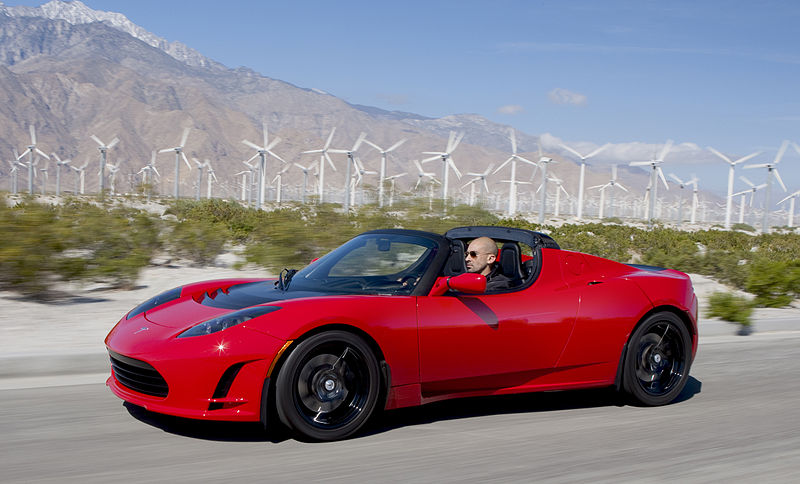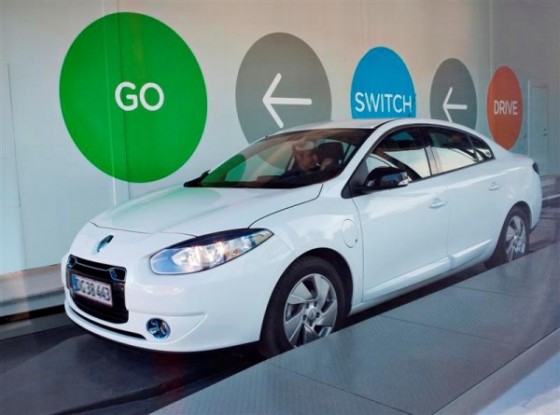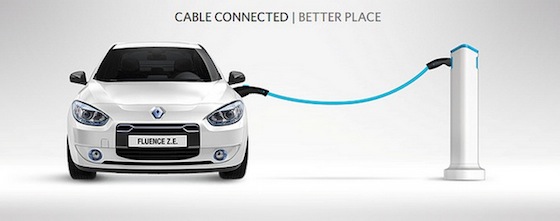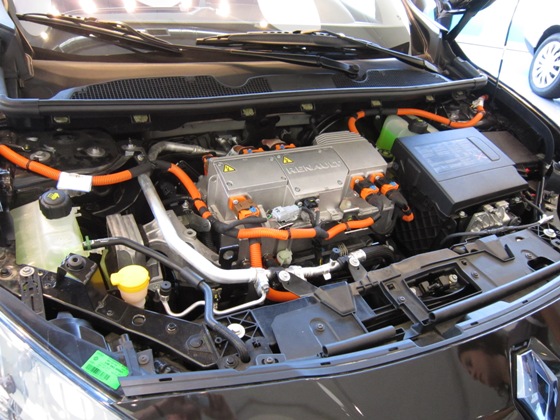

What if we could apply the charisma, imagination and marketing genius of Steve Jobs to help promote green technology? Israeli entrepreneur Shai Agassi had many of the characteristics of Apple’s much-worshiped CEO but instead of personal entertainment devices, Shai focused his energies on electric cars.
He had enough chutzpah to convince investors to bet nearly $1 billion on his grandiose plan to free Israel from the shackles of oil dependency.
Agassi’s inspirational Ted talk entitled A New Ecosystem for Electric Cars won him respect and a standing ovation. He appeared on the cover of Wired magazine and Fast Company celebrated him on its 2009 Most Creative People in Business list.
So what went wrong? How did Shai’s dream of a Better Place turn into a nightmare of chaos and bankruptcy? To learn what went wrong we first need to understand a little bit about Better Place and the history of technology.
[youtube]https://www.youtube.com/watch?v=FcoJt2KLC9k[/youtube]
The technology wasn’t the problem
Just as Thomas Edison tried nearly everything under the sun before he settled on a carbon filament for his incandescent bulb, Agassi’s team studied everything from railed slot-cars to air powered cars as they searched for a path out of Israel’s oil dependency. They settled on electric cars based on Lithium Iron Phosphate batteries. These batteries have an energy density of 220 Wh/L, twice that of the best lead-acid batteries but more importantly, his Renault Fluence Z.E. cars relied on an innovative charging mechanism where a robot would swap out the entire battery for a fresh one in less time than it takes to go through a drive-through car wash. Just as Edison developed electricity generation and distribution infrastructure to power his electric lights, Shai made sure that these robotic charging stations were part of his electric car plan. Israel was the perfect place to begin. 1000 charging stations would be sufficient to make sure that the entire country was within range. He made arrangements with Renault to produce 100,000 electric cars.
Underestimating your competition
And this, according to a former Better Place employee interviewed by Fast Company, is where things began to go wrong. Approximately 200,000 new cars are sold in Israel each year. Even Steve Jobs’ reality distortion field would have to stretch to assume that half of Israel’s new car buyers would abandon their Hondas, Hyundais, Toyotas and Fords and flock to his single model electric Renault during its first year of production. As one GM executive explained, “It took the Toyota Prius 15 years to get to 1.5% market share in the U.S., and the Prius is a hit.”
Overselling yourself
As a salesman, Shai Agassi would have given even the venerable Steve Jobs a run for his money. In fact after making comparisons to the growth of the cell phone industry and hyping the possibility that Better Place could be the world’s first trillion dollar company, Shai soon had the ear and money from Israel Corp, Morgan Stanley, Maniv Energy Capital and other venture capitalists. With his reality distortion field on overdrive, Agassi suggested that Better Place cars might sell for half the price of their gasoline competition, a number seemingly pulled out of the air before agreements had been finalized with Renault.
More money than sense
Speaking to Fast Company, former Better Place policy VP Ziva Patir said, “If Shai had raised $50 million instead of $200 million, it would have forced us to focus.” Projects overran their budgets, too many cars were ordered, charging stations cost twice as much as estimated, employees were highly paid in cash rather than in performance-based bonuses and no one had thought to hire managers with expertise in the automotive industry where efficient cut-throat competition is the norm.
An alternative point of blame, government as innovation’s anchor
Michael Granoff, the founder Maniv Energy Capital, one of Better Place’s first investors blames the government of Israel for a tax structure which favors hybrids and punishes electric car manufacturers. Because of this, he told Haaretz he fears that Israel will be the last country in the world to develop a viable electric car industry.
Repeating history
Those who believe in the relentless forward march of technology believe in a myth. A glance at history shows that the path to progress is full of backpedals and pitfalls. For example, the lead-acid storage battery enabled the first practical electric car to be developed in the year 1859. This technology improved until 1911 when the first hybrid was produced and became a commercial failure. We can imagine an alternative history where these early electric car companies invested their profits into the steady improvement of motors, batteries and photovoltaic charging technology. But Ford and other companies had begun the century of the internal combustion engine. Nearly all early electric car companies had failed by 1920. Electric car prototypes and limited production models made appearances in fuel-starved Europe during WWII and again in the 50s, 60s, 70s and 90s but their commercial success was limited by long charging times and the fact that state-of-the art lead acid batteries had only 1/100th the energy storage density of gasoline.
Better Place isn’t the first innovative companies to fail and it certainly won’t be the last. The computer industry is littered with examples such as Altair, Atari, Commodore, Cray, Digital Equipment Corporation, NeXT, Tandem… most of which created technological innovations which were lost for decades or forever after their demise. But for a bit of luck and the gleam in Steve Jobs’ eye, Apple could have easily ended up on that list. The auto industry is no different. Tucker, Edsel, AMC, DeLorean and others have come and gone.
There is a story from my home town about a man named Dr. John Wesley Carhart. He was a Methodist Episcopal pastor and he invented the world’s first automobile in 1871. He entered it in the world’s first long distance car race and drove it around Racine Wisconsin until the noise of its two cylinder steam engine frightened a valuable horse to death. Townspeople convinced him to disassemble it. Like the electric car, its time had not yet come.







Shai and Elon started around the same time and both knew only too well that sustainable energy would become our single greatest challenge of the early 21st century. Only difference was, Elon understood that targeting the mass market at the wrong time was a recipe for disaster. I remember him explaining this quite clearly. The reasons are too numerous for this post but in brief:
I say the wrong time because after 2008 the world assumed correctly we’d reached the point of conventional peak oil production (Brent crude skyrocked north of $147p/b) triggering the 2008 crash, QE/ZIRP and relentless fracking. Many assumed in 2008 that sustainability (including Shai) would therefore be in immediate focus. That actually happened, but what was underestimated was America’s ability to quite literally “scrape the barrel” re: uncoventional energy (shale, fracking, deep sea etc.) for a few more years out of desperation.
Conventional since 2006 has been declining by a massive 5% per year but relentless unconventional extraction rates of all liquid fuels has been offsetting that decline. In other words, we’ve plateaued in terms of total liquid fuel production since 2006. Projections show and therefore estimate the real downturn will actually start between 2015 & 2020. This is exactly what Elon has bet on with the building of the new mega EV manufacturing facility in CA. He expects sales of his Teslas to increase by 22 times during the next 6 years. One hell of a bet but then good luck betting against him. He’s working closely with the Pentagon and they need to know exactly what can be done not what they’d like to do operationally. The Pentagon knows Peak Oil is coming right around the corner and so do the politicians.
So Elon rather wisely decided to build a truly inspiring (Applesqeu) like product and thus target the luxury end of the market first. He knew it was highly likely no matter how good the engineering would be, the final costs of the car would be high, too high for the mass market to afford given energy costs are still relatively cheap for the reasons I’ve outlined in brief above.
Shai had the right idea based on solid fundamentals but his strategy was deeply flawed and his timing to target the mass market was wrong. If Shai was to do what he did today, I believe he could possibly succeed given the massive shift we’re about to face as a society.
“LIKE”
There’s a significant element of die rolling which keeps investment alive long enough for an innovation to fly, despite incredible odds. I’m not sure if the name of the game is to get folks so invested that failure no longer becomes optional…. but its a rare market innovation step change that isn’t a near clockwork example of the combination of errors you listed here.
Yes and I think the market bias towards short-term profitability almost demands a few years the kind of of magic snake-oil profits only pyramid pros like Madoff can supply. Its interesting that one of Shai’s more recent Ted talks highlights the long-term inevitability of solar and other green technology because it will become cost competitive. But that’s not something that will happen overnight. I think the 100k car order was the biggest blunder. A GM executive said that the Prius took years to get up to 1.5% marketshare and it was considered successful.
Wouldn’t it be weird if eco were considered to be too big to fail like GM, Chrysler and the banking industry?
Seems they forgot the first rule of sales and marketing: UNDER-sell, OVER-deliver!